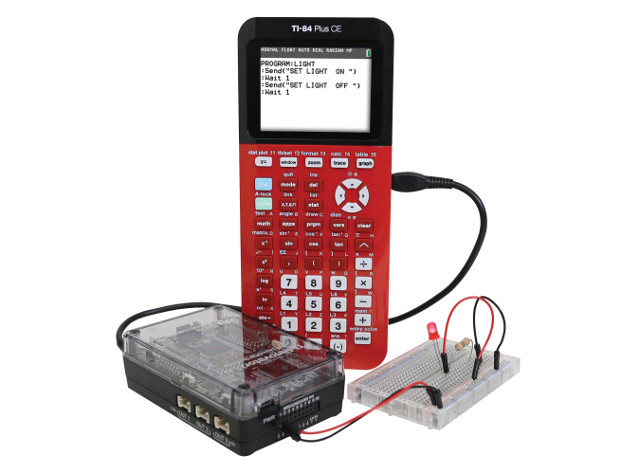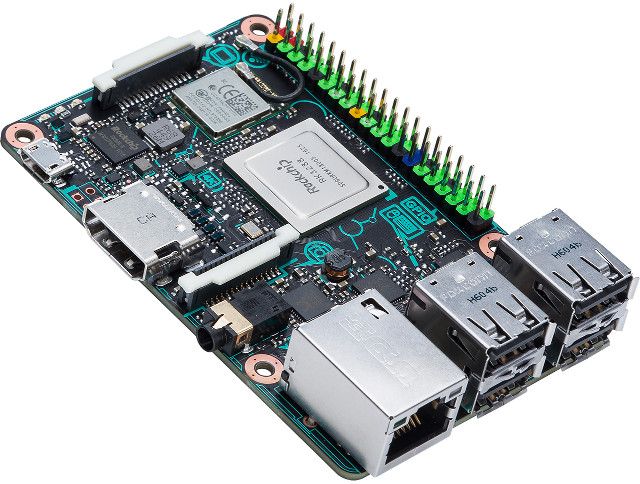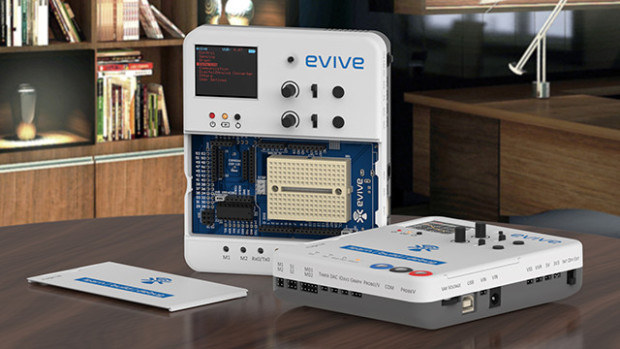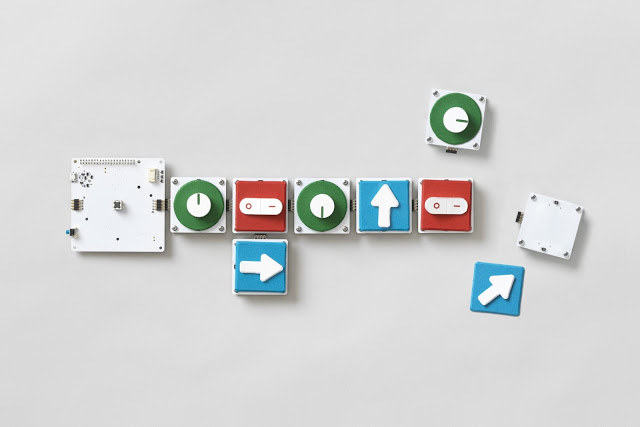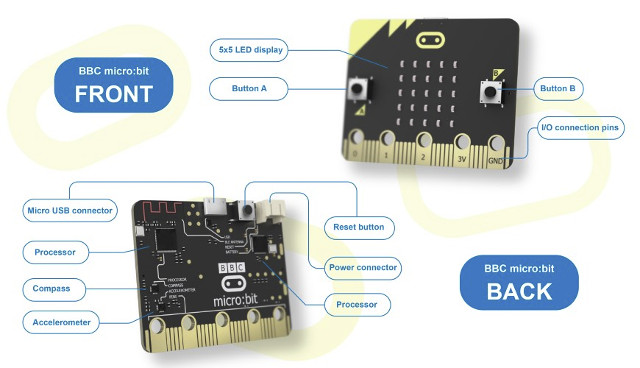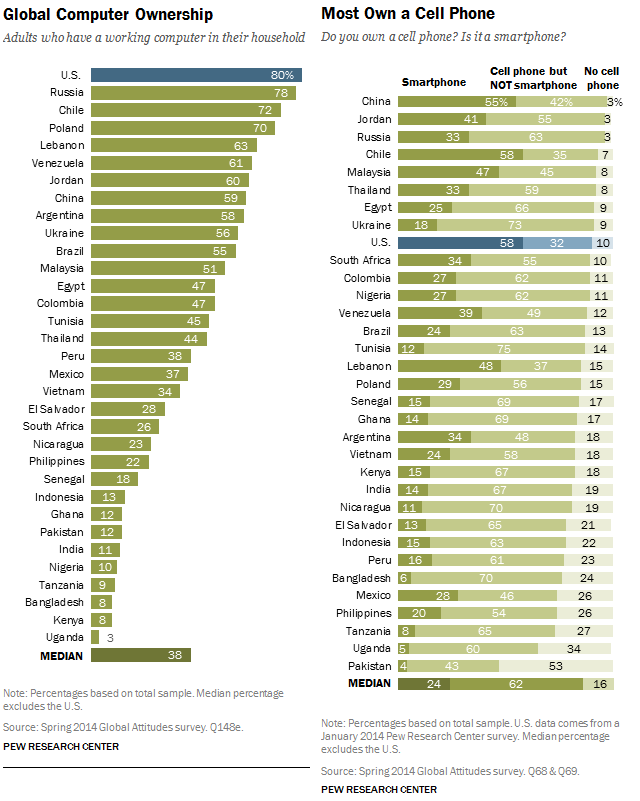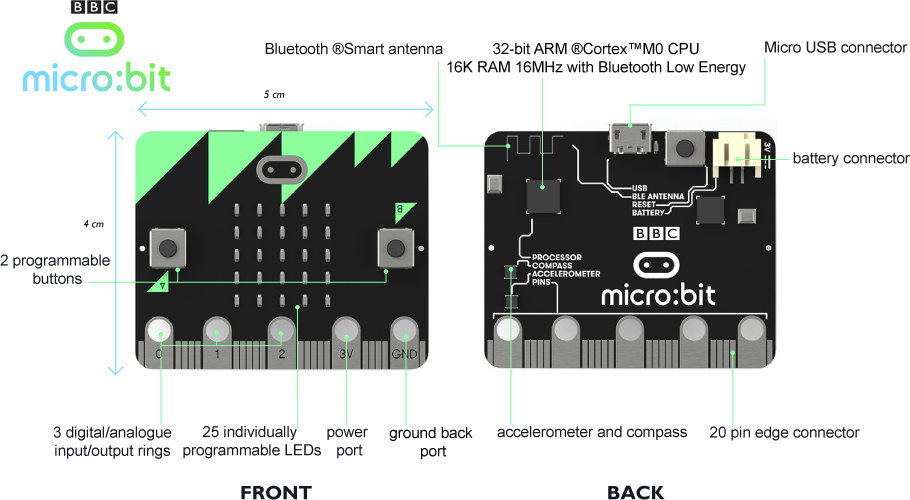I remember when I was in high school we all had those TI calculators to cheat enhance our chances of passing exams, but Texas Instruments has now launched what it calls TI-Innovator Hub based on a MSP432 LaunchPad board that connects to some of their graphing calculators and allows student to program and control external hardware through their calculators. Innovator Hub hardware specifications: MSP-EXP432P401-ET TI LaunchPad Board 3x input ports, 3x output ports, I²C port Breadboard connector with 20 labeled pins USB Mini USB Port (DATA port for connection to a TI graphing calculator, or a computer running TI-Nspire CX software) Micro-USB port (POWER port to connect to external power source) Misc – Red LED, RGB LED, Light Brightness Sensor, and speaker Enclosure The hub can then be programmed using TI-84 Plus CE (TI Basic language) or TI-Nspire CX (Lua language) graphing calculators. It’s a bit like playing with Arduino […]
ASUS Tinker Board is a Raspberry Pi 3 Alternative based on Rockchip RK3288 Processor
Regular readers may remember MQMaker MiQi board, a $35 (and up) development board powered by Rockchip RK3288 quad core ARM Cortex A17 processor, based on Raspberry Pi 3 form factor, but much faster according to benchmarks. Sadly, the board’s crowdfunding campaign was not that successful, possibly because of the “its’ a 2-year old processor” syndrome. But now, Minimachines has found that ASUS has designed a very similar board, dubbed Tinker Board, with an extra WiFi and Bluetooth LE module, audio jack, MIPI DSI connector, and a few other modifications. Asus Tinker Board specifications (bold highlights and strike-through show differences with MiQi board): SoC – Rockchip 3288 quad core ARM Cortex A17 up to 1.8 GHz with Mali-T764 GPU supporting OpenGL ES 1.1/2.0 /3.0, and OpenCL 1.1 System Memory – 2GB LPDDR3, dual channel Storage – 8 or 32 GB eMMC flash + micro SD slot Video output & Display I/F 1x HDMI 2.0 up to 3840×2160@60p […]
Outernet Introduces Standalone & DIY Internet Satellite Kits for C.H.I.P Board, Raspberry Pi 3 Board, and Laptops
Outernet goal is to bring knowledge and/or emergency info to places without Internet either to remote places, or where Internet has been temporary shutdown due to natural disasters or political reasons through a satellite feed. In some ways, it works like a typical FM radio, but instead of receiving audio, you’ll get data. The first hardware was based on WeTek Play TV box, and called Lighthouse, but they now have a DIY kit that will work with Next Thing C.H.I.P, Raspberry Pi, or Laptops running Windows 7/10 or Linux, as well as a standalone Outernet Satellite kit including C.H.I.P Allwinner R8 development board. Let’s first check out “Basic Outernet DIY Kit” comprised of three items: L-Band Antenna Frequency: 1525 – 1559 MHz (Center frequency: 1542 MHz) 8dbi 4″ SMA Male connector Dimensions – 12 cm x 12 cm x 1.5 cm Weight – ~100 grams RTL-SDR Blog Software Defined Radio/Tuner […]
Evive is an Arduino Compatible Platform with Enclosure, Lots of I/Os, Buttons, and an 1.8″ Display (Crowdfunding)
Engineers at Agilo Technologies, an Indian startup based in Kanpur, Uttar Pradesh, felt that the wire mess often produced while learning or prototyping with Arduino boards could be an issue, and it was easy to mis-wire your setup, so they’ve decided to create a user and student friendly Arduino compatible system with many of the items you’d normally use with Arduino board such as buttons, probes inputs, an 1.8″ color display, headers for ESP8266, Bluetooth, and XBEE moduels, etc.. and all of that enclosed in a neat case. Evive was born. Evive specifications: MCU – Atmel ATmega2560 8-bit AVR MCU @ 16 MHz with 256KB flash, 4KB EEPROM, 8KB SRAM Storage – micro SD slot up to 32GB Display – 1.8″ TFT display; 160×128 resolution; 18-bit color User inputs – Tactile and slide switches, joysticks, and potentiometers Probes inputs – Voltage / Intensity sensing inputs USB – USB device port Expansion Headers […]
Raspberry Pi Zero Based Google’s Project Bloks Aims to Teach Programming to Young Children
Visual programming development tools such as Scratch or Blockly are now becoming more popular to introduce school children to programming, and Google Research is now working on bringing the software visual programming concept to physical blocks “programming” though Project Bloks targeting younger children who may not be able to write or read yet. It might also help older children grasping programming concepts faster than when programming by typing on a keyboard. Project Bloks is comprised of three main hardware components connected together: Pucks – Those are the buttons, dials, switches, and other inputs from the project. Pucks have no active electronics, and even a piece of paper with some conductive ink could be a Puck. Base Boards – They read a Puck’s instruction through a capacitive sensor, and forward a Puck’s command to the Brain Board. Each Base Board is also fitted with a haptic motor & LEDs, and can […]
You can now buy BBC micro:bit board for $19
BBC recently distributed micro:bit boards to UK schools to get student interested in electronics and help them learn more about this subject, but so far it was not for sale to the general public, but this has now changed since the British broadcaster now launched the board for 13 GBP (~$19) via Element14/Farnell and others distributors. The board is powered by Nordi Semi nRF51822 SoC with ARM Cortex M0 micro-controller and Bluetooth LE connectivity, features motion sensors, plenty of LEDS, a few buttons, a micro USB connector for power & programming, as well as a header for LiPo batteries. There are various ways to program the board either interpreted languages such as Python or JavScript, or graphical drag and drop programs such as Microsoft Block Editor. All technical details and example projects available on Micro:bit official website. Beside the board only, several kits are being offered included micro:bit Go with […]
Programming ESP8266 Boards with a Smartphone
In recent days, I wrote about low cost MCU boards such as the $2 BluePill, and the One Dollar Board project, but several people commented that while the board themselves are very cheap, it might still be a problem in some developing countries, where access to computers cannot be taken for granted. So person suggested that such initiative would work better in some countries if programming was possible via a smartphone instead. Is that true? According to a 2014/2015 study by Pew Research Center, there is some truth to it, but it varies greatly between countries. For example, 55% of Brazilian adults own a computer at home, while only 24% own a smartphone, but in Kenya only 8% own a computer at home, while 15% own a smartphone. Some devices in the “cellphones but not smartphones” might be feature phones with WiFi and a web browser. Anyway ideally a low […]
BBC Micro:Bit Board is Now Getting into the Hands of British Students
After several delays, BBC is now giving free Micro:Bit Bluetooth LE enabled boards to UK students with the goal of getting them interested in coding and electronics in a way that’s even easier and cheaper than using a Raspberry Pi board. Micro:bit specifications: MCU – Nordic nRF51822 Bluetooth SoC based on Cortex M0 core @ 16MHz with 16KB RAM 2x user buttons, 1x reset button 25x red user LEDs in a 5×5 matrix Connectivity – Bluetooth LE Sensors – Compass, magnetometer, accelerometer USB – 1x micro USB port for port and programming Expansion – 20-pin edge connector, 5x “rings” for 3V, GND, and 3 digital/analog I/Os Power – 5V via USB or battery port to connect two AAA batteries Dimensions – 4cm x 5cm There are four ways to “code” the board: Code Kingdoms JavaScript graphical ‘drag and drop’ and text-based programming, Microsoft Block Editor graphical, drag and drop code […]


